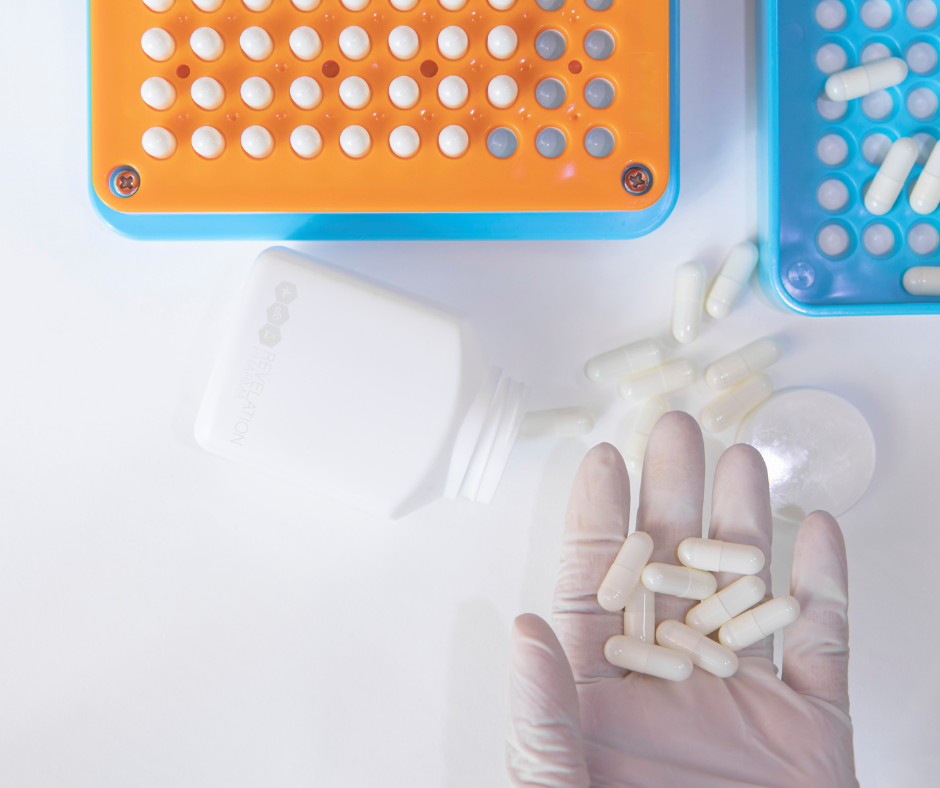Contributed by Emily Durham, MS—VP of Business Development, Revelation Pharma
As Dylan would say, come gather 'round people, wherever in healthcare you roam, USP standards are a changin'.
The United States Pharmacopeia, or USP, is an independent, scientific nonprofit organization focused on building trust in the supply of safe, quality medicines.1 In this article we will focus on a couple of the important USP <795> revisions and practice pearls that will impact facilities engaging in non-sterile/non-hazardous compounding.
These revisions are scattered amongst the 14 sections of the chapter and were officially enforceable starting on November 1st, 2023. It will be important for all medical professionals and facilities that work with medications (manufactured or compounded) to review the new standards and adjust their current quality assurance and quality control (QA/QC) programs.
Practice Pearl — Create a quality-focused culture. Add registering for free USP and FDA compounding-related alerts to your HR onboarding process. Regularly review regulatory meeting minutes and warning letters during staff meetings. Encourage employees to conversate on quality-related current events and how important it is to employee and patient safety.
In USP Chapter <795>, there were multiple exclusions made, but one exclusion that impacts the entire pharmacy community is the exclusion of reconstituting conventionally manufactured products according to the manufacturer label. This was previously included as a compounded non-sterile preparations (CNSPs) that was subject to USP <795> standards. If the reconstituted medicine is manipulated beyond the manufacturer label directions, for example adding flavor to a suspension, then the preparation will be considered a CNSP and subject to USP <795> standards.2
Another important revision to the chapter was the emphasis on personnel training. The training addition outlines requirements for exhibiting proficiencies in core competencies that are critical to safely compounding (hand hygiene, garbing, proper record keeping, etc.). It is now a requirement for anyone who oversees or engages in compounding to be trained and qualified in the core competencies outlined in Section 2 of the chapter, then reevaluated every 12 months. Another training-related revision is noted in Section 11, which now includes language that all personnel overseeing and engaging in compounding must be trained in the facility’s SOPs and be held responsible for ensuring that they are followed.2 There is also further defining of the training procedure, which includes three steps that need to be included in the training procedures:
1. Understand the requirements of the chapters.
2. Understand and interpret safety data sheets and certificates of analysis (if applicable).
3. Read/understand procedures related to compounding duties.2
Since many of the revisions place an emphasis on training and documentation, a new role is introduced to ensure standards are being met — the role of the designated person(s). The designated person(s) will primarily be responsible for the QA/QC controls and performance of the facility’s compounding practices. They play a critical role in documenting personnel training (as noted above), tracking variances, facility monitoring, cleaning, and corrective actions, in addition to many other tasks.
The designated person(s) is also responsible for the organization and storage of quality documents, as well as managing version control. These documents need to be stored on a secure server with restricted access. All changes must be recorded, detailing who made the modifications, and previous versions should be archived.
Practice Pearl — The designated person(s) should host recurring staff quality meetings which include the entire staff.
The designated person(s) should be empowered to provide transparent summaries of successes and variances that highlight the performance of your company’s QA/QC program. Owners and managers should allow for productive conversations about process improvement or recurring variances to flow as this fosters an environment that continuously focuses on quality and safety.
The final revision that has a major impact on quality and patient access to compounded medication is updated beyond-use-date (BUD) limits. A new concept was introduced that dictates the beyond-use date of CNSPs — the Water Activity (aw). Water Activity assesses the susceptibility of a nonsterile preparation to microbial contamination and the potential for degradation due to hydrolysis.3 In the absence of stability information, the chapter revisions provide clarity to the aw, storage temperature, and BUD of all commonly compounded dosage forms. Aqueous dosage forms now have a 14 to 35-day BUD, and non-aqueous dosage forms have a 90 to 180-day BUD.
Compounders are allowed to extend the BUD with the presence of the following information:
• BUD may be extended up to a maximum of 180 days.
• Stability-indicating analytical method for the API(s), CNSP formulation, and material of composition of the container closure that will be used.
• An aqueous CNSP must be tested for <51> antimicrobial effectiveness at the end of the BUD.
• Bracketing can be utilized to provide flexibility.
• If compounding from a USP-NF compounded preparation monograph, the BUD must not exceed the BUD specified in the monograph.3
Practice Pearl — Keep the updated USP <795> beyond-use-date charts printed and readily available.

Keeping commonly referenced charts laminated at each workstation will help instill new practices and compliance, such as table four. BUD Limit by Type of Preparation in the Absence of a USP–NF Compounded Preparation Monograph or CNSP-Specific Stability Information.
As a reminder, USP does not enforce its own standards. Instead, regulatory bodies like the FDA, state boards of pharmacy, and accreditation organizations such as PCAB ensure compliance with USP standards. It’s crucial to regularly communicate with the state boards of pharmacy where you hold licenses to verify the specific standards they enforce.
Resources
1. About U.S. Pharmacopeia | USP. (2019). Usp.org. https://www.usp.org/about
2. ashp.org. (n.d.). Retrieved April 30, 2023, from https://www.ashp.org/-/media/assets/pharmacy-practice/resource-centers/compounding/docs/USP-795-Key-Changes.pdf
3. Pharmaceutical Compounding — Nonsterile Preparations. (2022). https://www.usp.org/sites/default/files/usp/document/events-and-training/2022-11-08-gc-795-open-forum-website-posting.pdf